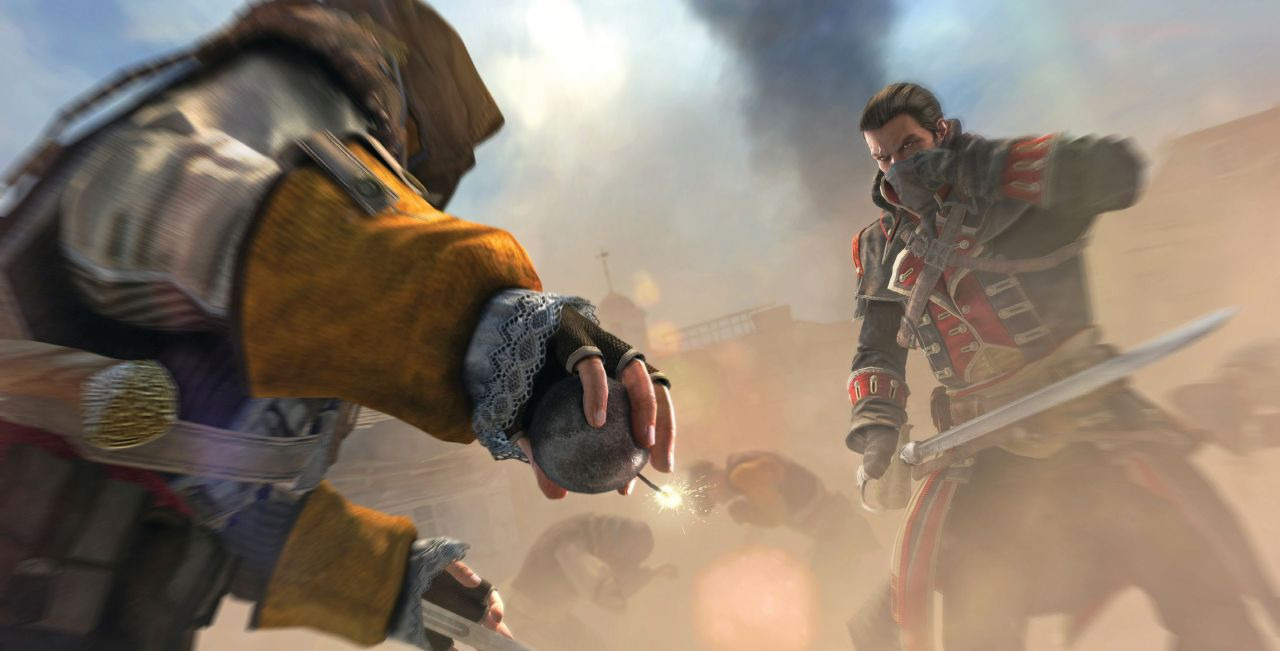Playing The Victim - What Sets Assassin's Creed Rogue Apart

It’s no secret that in the build up to this year’s duo of Assassin’s Creed releases the smart money was against Rogue. Made by Ubisoft Sofia, previously responsible for the ambitious but uneven Assassin's Creed III: Liberation for PlayStation Vita, and built on the tech and gameplay foundation of last year’s Black Flag, Rogue looked for all the world to be a retread.
And, in part, it is. You sneak and sail your way through a fresh arctic environment with a wealth of enhancements and minor tweaks to the existing combat and navigation systems, but this is not the grand overhaul of tech and design that Unity represented. Fast forward to a few weeks after their launches and reality has painted a very different picture. It turns out that it never hurts to bet on the underdog.
Rogue is the vastly more accomplished of the two
releases and a fine game in its own right. For all its similarities to
previous installments, however, it does a few things that stand out.
After a brief handful of introductory hours walking the path of an Assassin, newcomer Shay Cormac is put into an impossible situation that forces his hand and, ultimately, causes him to switch sides. After 7 years of playing as Assassins and stalking enemies from the shadows while seeking to bring freedom (some would say chaos) to the masses, Rogue is a tale from the more orderly Templar perspective.
Shay’s former brothers-in-arms are not pleased with his change of heart and this means everything to the way the game is played. For years we have been stalking unwitting adversaries from the edges, taking solace in bales of hay, shrubbery, wells; anywhere out of sight and out of mind. In Rogue, strolling past any of these locations unaware can get you killed in a hurry.
It starts as a whisper and a light blurring at the edges of the screen. The whispers build gradually to a din as a “compass” of sorts on the HUD begins to fill up, glowing intensely as you near your stalker (or stalkers as so often happens). It’s an interface borrowed from the series’ paranoia-inducing multiplayer mode and it works wonders here.
The whispers are your cue to be on the defensive, turning on Eagle Vision and poking around at every corner. The rooftop advantage that all of the series’ characters have enjoyed becomes a necessity for Shay in not only spotting his assailants before they rush at him with a blade, but in preventing them from pouncing on him from the very rooftops that have always provided safety.
Nothing makes you feel more clever than spotting an Assassin hiding in a well, luring them out with a well-placed noisemaking firecracker dart from Shay’s silenced Air Rifle, and killing them before they have the chance to do the same to you. Likewise, nothing fills you with more embarrassment than running for your life from a horde of guards only to find yourself killed in one hit by an Assassin that, in your haste, you never saw lounging on that bench you passed by. It’s all terribly thrilling and adds a wonderful dynamic tension to the moment-to-moment gameplay that is sadly absent from Unity.
One of the oldest side missions in the series has seen players accepting assassination contracts from pigeon coops. The Assassins have made use of these messengers since the Italian Renaissance and Rogue demonstrates that this has not gone unnoticed by the Templars. In a fascinating inversion of the norm, Shay must intercept these messages by sneaking up on a pigeon, finding the target revealed in its letter, and rushing to their defense.
Defending them is a wonderful game of cat and mouse. These missions give you a firm time limit and task you with finding often upwards of half a dozen Assassins that are dressed to blend in with the rest of the townsfolk. Finding them and dispatching them before they kill the person you are trying to defend is an intense experience that left me with frayed nerves after every single mission.
Whether or not Rogue marks the last we experience of Shay or the Templar’s side of the story remains to be seen. Despite the odds stacked against them, Ubisoft Sofia has delivered a sprawling yet personal adventure that expertly plays with fan expectations. In light of the recent disappointment with Unity, it’s clear that Ubisoft’s more experienced teams would do well to look to the underdog for inspiration.
